Beetles, Wood, and Projects

The Mighty Beetle
This is the third post in my series about living off the grid working for ModelOp as their CTO designing advanced software for managing your ML/AI models in an enterprise.
In this week’s article we are going to talk about an unfortunate reality here in Colorado, the spruce beetle, and how we are managing our 14 acres of wooded property.
As a note I will show lots of tools, products, etc. that I use up here that I have found to work for me. I do not receive any compensation from any of the companies products I show, it is just what I bought and use.
The spruce beetle
The tiny spruce beetle has caused massive destruction of spruce trees out here. It all began about 4 years ago and really moved in with such speed and force that it was shocking.
My land is a mix of Engelmann Spruce and Lodgepole Pine. The spruce beetle, fortunately, only attacks the spruce. They burrow into the bark, leaving small holes behind, and eat the layer between the bark and the tree. By the time you see the first browning of the leaves on the tree, it is already too late and it is dead.
There are areas near here that are only spruce that there is literally no green left at all, and just the skeletons of trees. Having the Lodgepoles has turned out to be a blessing, although it is ironic as they were planted here by the miners in the 1800s for mining timbers, and are not native to the area.
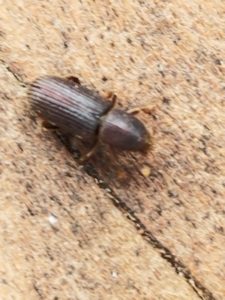
Changing the Landscape
The entire forest was affected, including quite a bit of my land. The hillsides turned from luscious green forest, to a dull grey/brown in the course of just a couple of years.
This is not only visually disturbing, but is a huge danger. All of this standing dead trees, with very fine branches, is an extreme fire danger. So especially on my land, I need to clear it all out if I ever want to have the hope of surviving any kind of a fire.
Clearing Out the Land
There is a ton of work to do here to remove all of this beetle kill. It is a top priority for us up here at the cabin. But with so much wood, what do you do with it all? Well we have a multi tiered strategy of how we use it all, but the first step is getting it all cut down.
In the pictures below, you can see a before and after from the same spot. Notice how much more light there is after just partially clearing this area. It dramatically changes the woods and as we remove the dead, we hope it encourages more trees to grow back.
As you can see, some of these trees are quite large. Being safe while doing this is of the utmost importance. You really have to take the time to learn how to properly drop and fell a tree or you can seriously injure yourself. Fortunately, I have been doing this since I was a child, so I came to the game with this skill already.
The Most Important Tool in the Woods
Your chainsaw is absolutely the most important tool you will have out here. Do not scrimp on a cheap model, as they will either be under powered, or weigh a ton. I personally like this saw as a balance of power and weight. It is a Stihl MS 362C and really does a great job.
I find I can cut for a quite a few hours and still be capable of moving my arms some, whereas other saws I have used just destroy your arms with the weight. Also, I use professional chains without anti-kickback features, as the safety chains will not get the job done.
If you are headed off the grid in the woods, this should be your absolute first purchase you make. You will be using it a lot.
The First Use of Wood
The first use of the wood we prioritize over all else is the larger bottom part of the trees for lumber. Lumber has gotten more and more expensive over the years, as well as it is very difficult to transport to up here.
So I bought a chainsaw mill by Logosol, to turn our wood into lumber for all kinds of projects. So all of the thicker portions of the tree get cut into 10 foot lengths, hitched up to a chain, and dragged by my ATV up to my barn where they are stacked and eventually turned into lumber.
This is the most valuable use of the tree, and I am building all sorts of things from it.
I will be writing a future post on how exactly you use a chainsaw mill to do this.
Projects Galore
The lumber it makes is great. I have made shelves to hold a lot of our supplies inside the house, also you can do ‘live edge’ where you leave one edge of the board natural. The shelves holding the laundry detergent are an example of this, and it is quite a nice effect in a rustic cabin.
Also, you can make entire buildings out of free wood. This year I have built a new outhouse (for when we have guests again to avoid overloading the septic system) entirely out of wood I milled myself.
Long term plans include building a new shed on the property that I will outfit for having a quiet place to work down by the river, as well as serve a dual purpose as a place for guests to sleep when they visit.
The interesting coloring you see is an effect from the beetles. It does weaken the wood a bit, but I just cut it a bit extra thick to counter for that.
A Bonus to Lumber
When you cut the trees into lumber, basically squaring them off, you actually remove the round slices of wood. These aren’t very big, but they do add up.
So all of these pieces we slice up and they work perfect for firewood where you don’t want a long running fire. So we use these for all of the summer and fall, and the occasional campfire.
Our Only Heat, Cordwood
The rest of the tree gets cut into firewood lengths right where I drop it. We require at least six cords of wood up here to make it through an entire winter. The stove runs 24×7 once we hit about October, so getting our own wood off of our own land is a huge cost saver.
I have about half of our wood for the year done, but want to take advantage as much as I can of getting ahead. We have a woodshed to keep the wood dry, but it is open to let the wood dry out on the inside. Wet wood does not burn cleanly at all and generates a ton of smoke, so it is important to properly cure it.
One of the best investments we made last year was to get a wood splitter. Before this, I chopped it all by hand. In one day now, I can get done what used to take me a week. So it is a huge time, and back, saver.
The end result follows an old saying… ‘Chop your own wood, and it will warm you twice’. The way we are doing it, I think it might be more like six times! Living off the grid you definitely do not need a gym membership, so even more savings.
The Leftover Scraps
Unfortunately at the end, there is still a huge pile of branches. This is especially true of the spruce trees compared to the lodgepoles. There are tons and tons of fine branches that have to be cut off when you first cut down the tree, then piled up to remove them from the forest floor.
This last step is especially important to encourage new growth in the forest to replace all of these lost trees. The goal here is to not only remove the fire danger, but encourage growth.
In most years, I would simply wait for a thunderstorm to pass, and light the piles in an open area immediately after while everything is very wet. Unfortunately this year, we are in a stage one fire ban. So instead we have created a burn barrel by drilling air holes near the bottom in the side, and move it around from pile to pile feeding in the brush. This is the safest way of getting rid of all this lingering fire hazard around our property.
Leaving the Land Better Than You Found It
The overall goal of this entire process is to try and help repair the damage the beetle has done to the woods. In a natural cycle, there would be occasional forest fires that would burn down the largest trees, and thin the forest out. Unfortunately there is such a huge load of these trees now that any fire would actually be too hot, and take out everything leading to flooding and erosion, and it would take many years for the forest to recover.
Interestingly, the beetles will not target a tree under a specific size. So by removing all of these monster dead trees, we are taking the place of fire, and letting the next generation of smaller trees come in to take their place.
As you can see here, this small section I cleared in a single morning is now sunnier, and there are many small spruce trees that were hidden in the mess of dead branches. They will grow and help the woods to recover returning it to its natural beauty.
By using every ounce of the wood I can, I also feel I am helping to not only clear things out, but use them for things I would otherwise have to take from somewhere else.
Plus there is a very real satisfaction every time I use the shelves, or even my outhouse, in knowing that all of the wood used to build this was dead trees on my property only a few months ago. Creating something truly from scratch carries a very real pleasure.
In next weeks blog, I will talk about the challenges of data usage, video conferencing, satellites, and how to make it all work.
Thanks for joining me this week,
Jim Olsen
Off Grid CTO

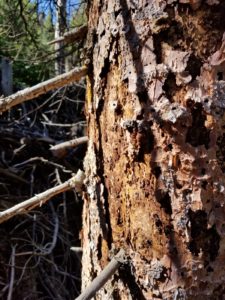
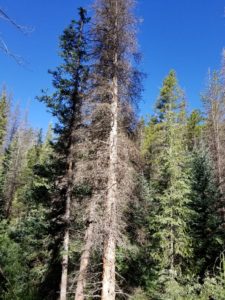
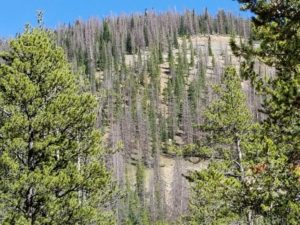
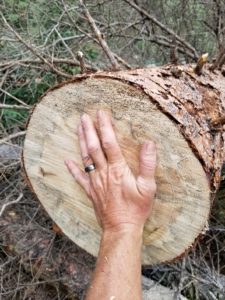
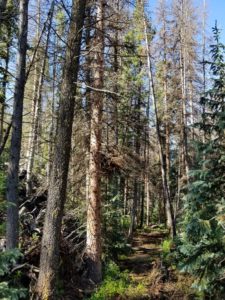
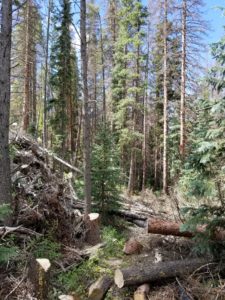
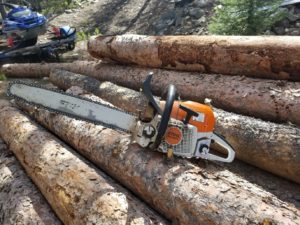
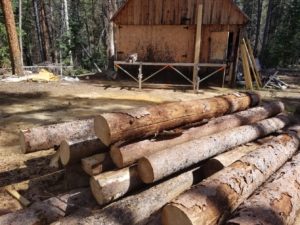
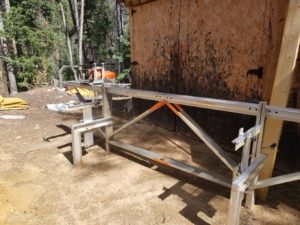
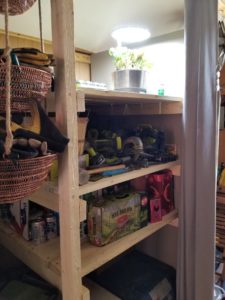

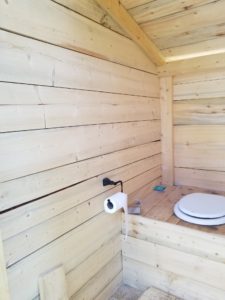
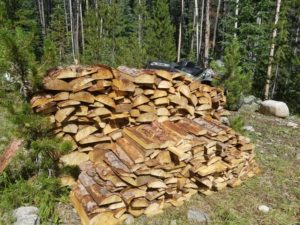
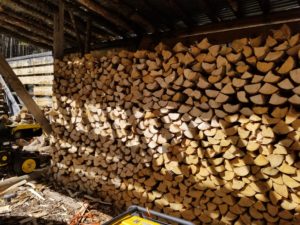
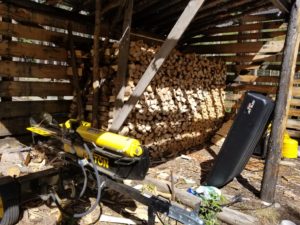

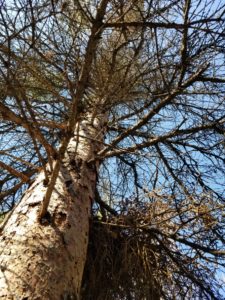

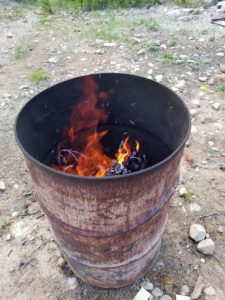
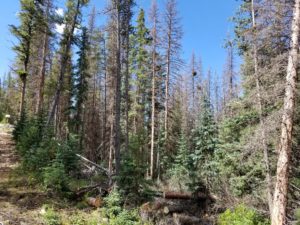
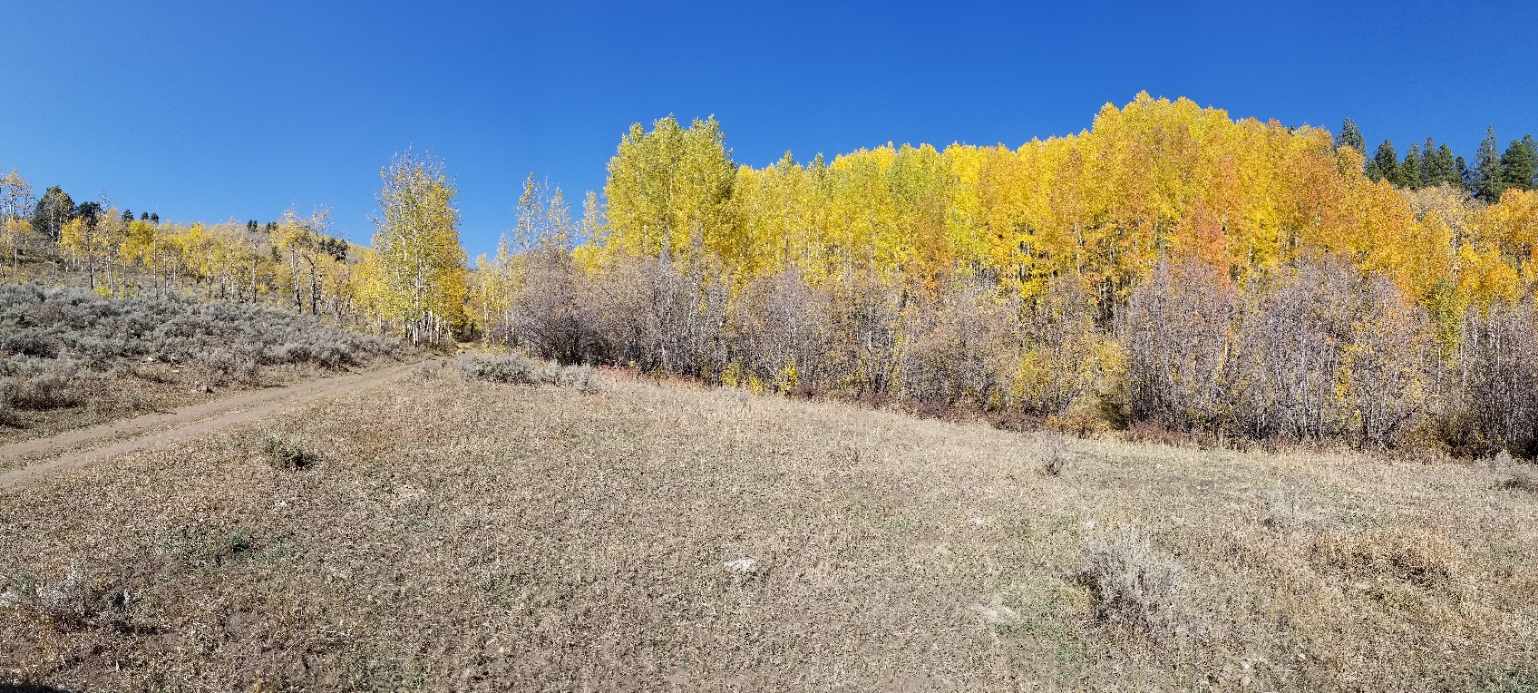
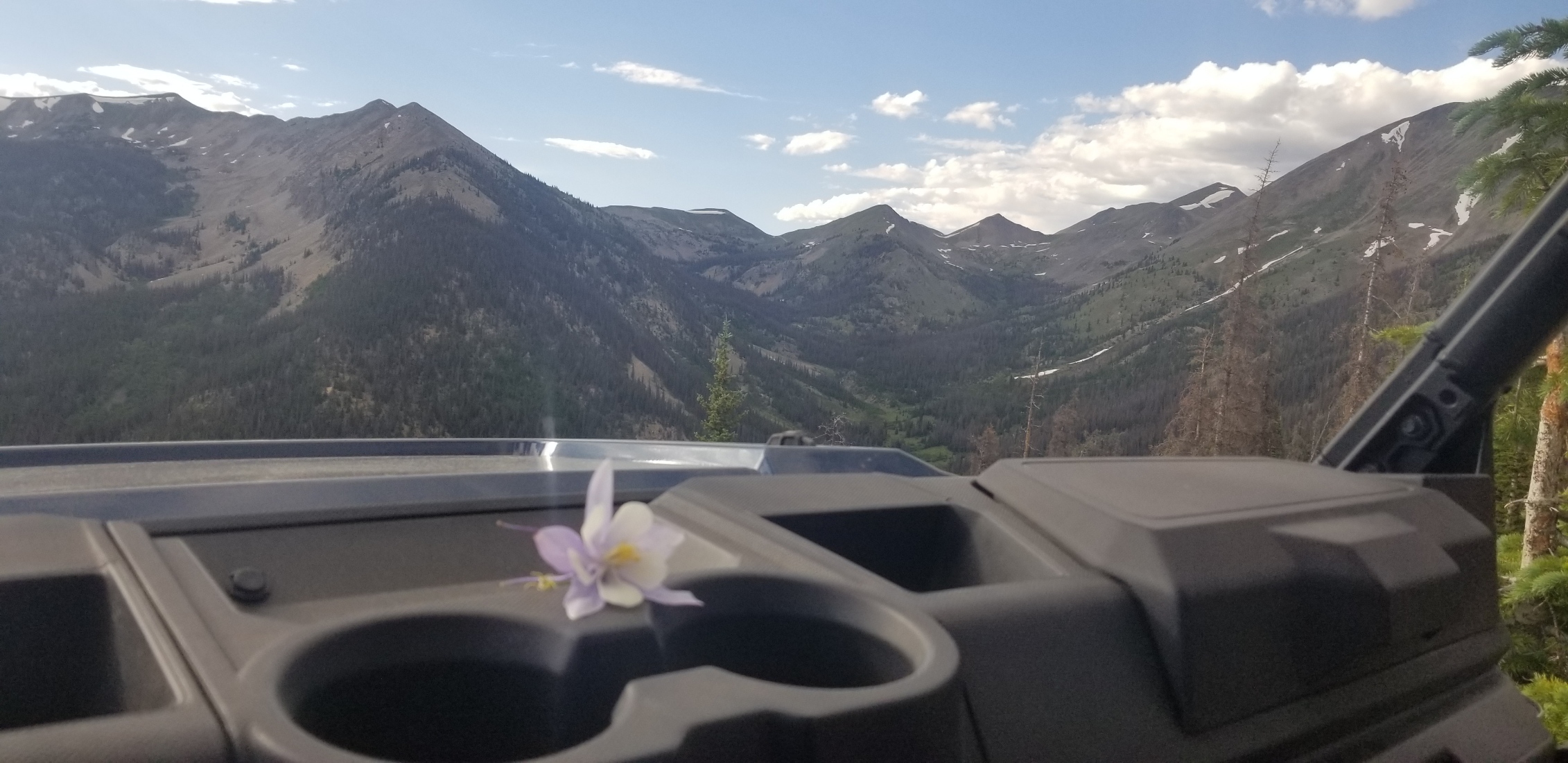
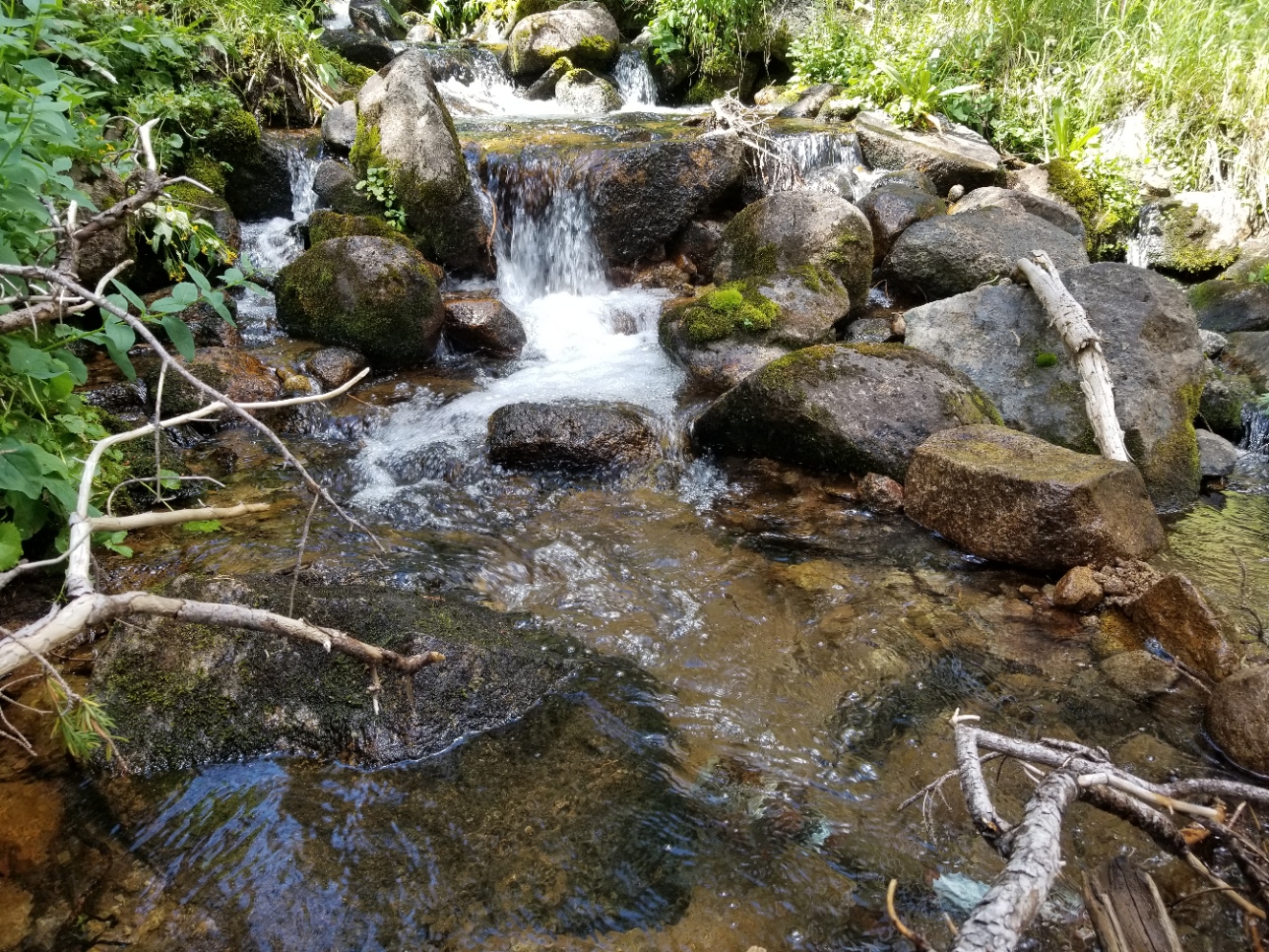
Love your posts. Very interesting to learn how you are dealing with challenges. How do you get electricity? What is your network connection? How far is your nearest neighbor? Sound like a hard but fulfilling experience. Best, Scott Toborg
Check out the about section of the website. I have a detailed walkthrough of the network and electrical system up here and it will give you all of the details.
And this is why you are the Most Interesting Man. I’m enjoying reading your posts Jim. Cool stuff.
Thanks Kim! Glad to have you on board and following along. Quite the change from all of the traveling and hotel rooms for sure!
Glad to hear the log splitter is doing it’s job. Great article Jim. Look forward to the next.
Thanks, got another row cut up and split this weekend. Only two more to go to be ‘caught up’. Hope you are keeping cool back there in the heat wave!
Definitely an inspiring lifestyle Jim! Congratulations! Lots of work with a rewarding feeling that we can solve our own problems and challenges. Many greetings from Peru!
My son (Nate Bradac) shared this link. Great blog, well written! I enjoyed your taste in beer and the 2-headed cat… 🙂 Is that a 20″ bar on that Stihl MS 362C, and do you use it with your Logosol chainsaw mill? Best regards, Mark Bradac
Yes, it is a 20 inch bar. Too much larger and it gets in the way. I use a Husqvarna for the log mill as it has a much larger engine, and use a shorter bar. It is way too heavy for general cutting. I plan on getting a monster bar for that one, as I have a few trees that my current saw is too small for, but use a shorter bar for stability on the mill.
I will be doing future post more on how the mill works and what I am doing with it.
Welcome aboard!
Jim